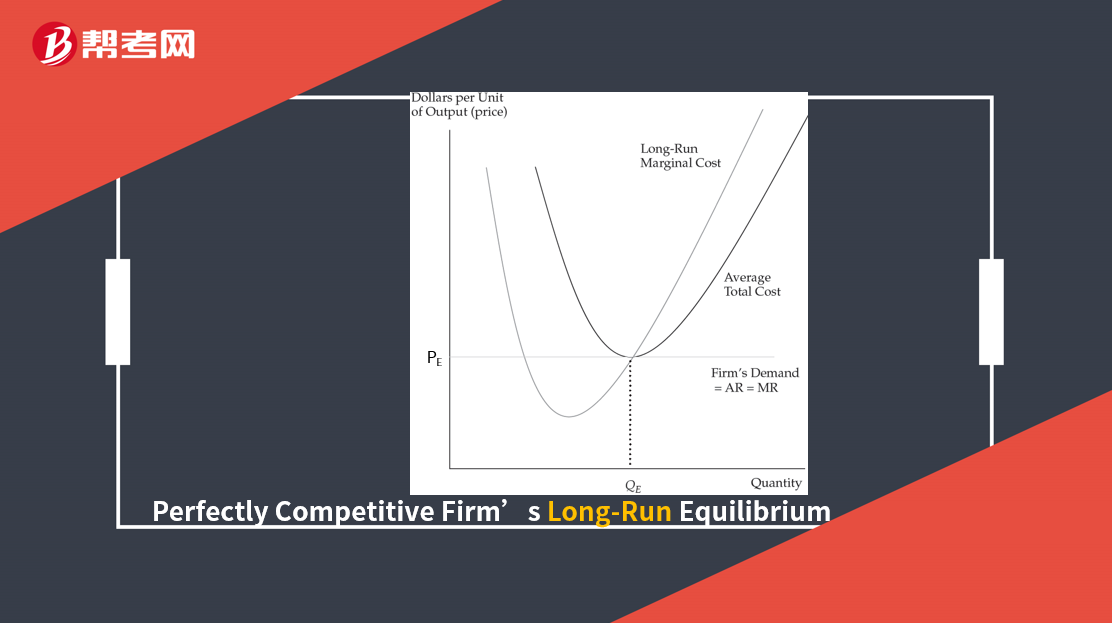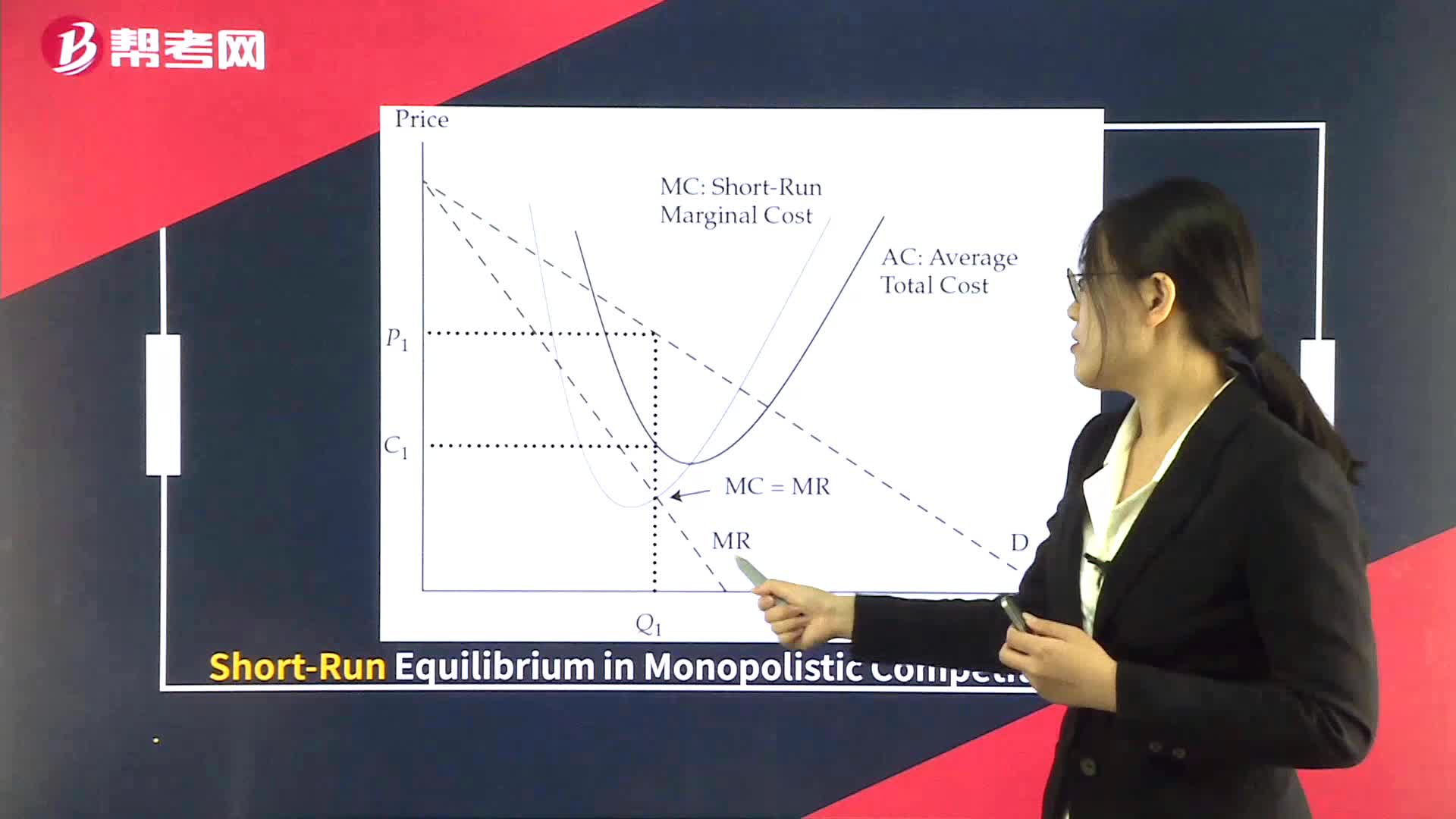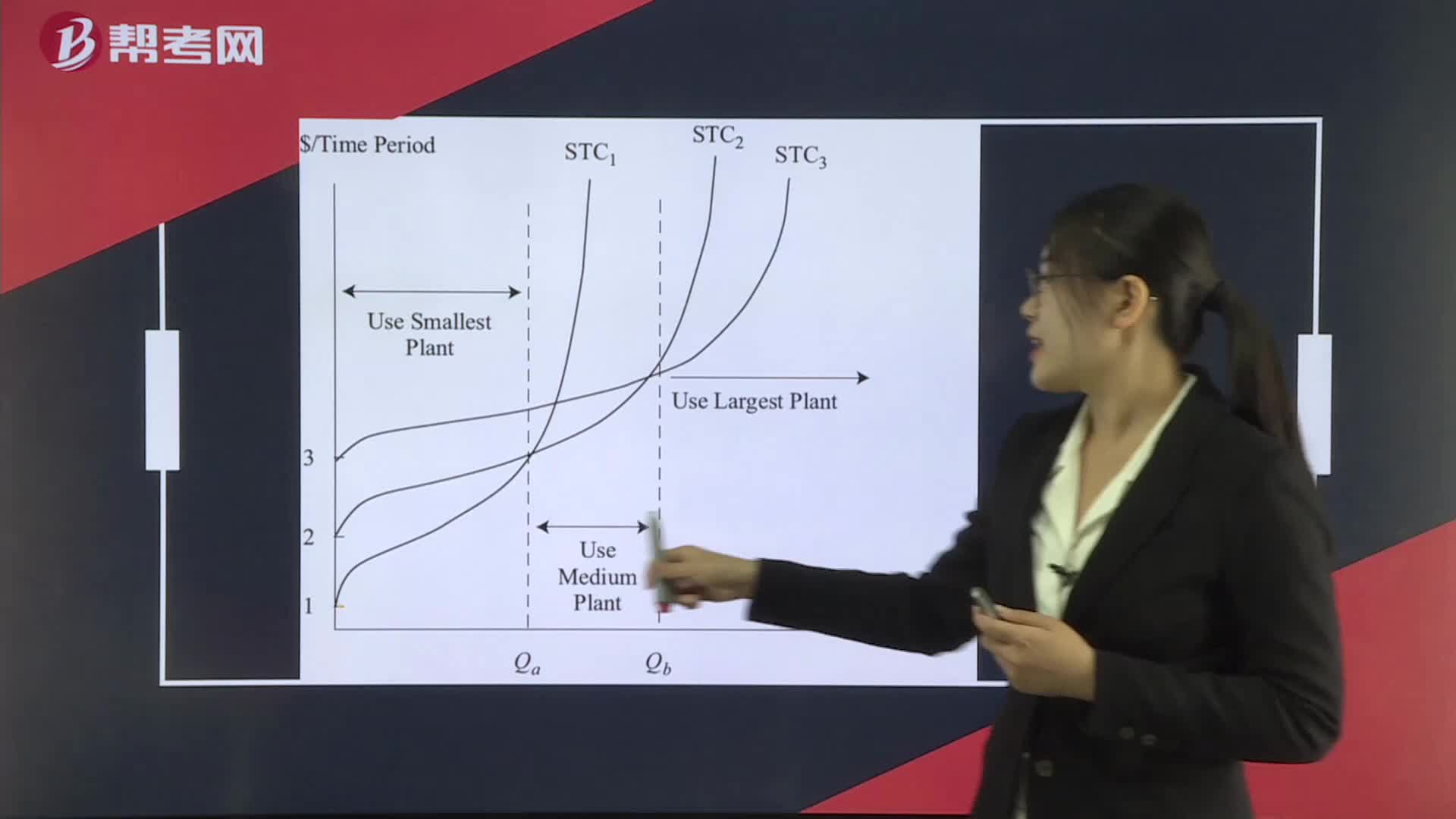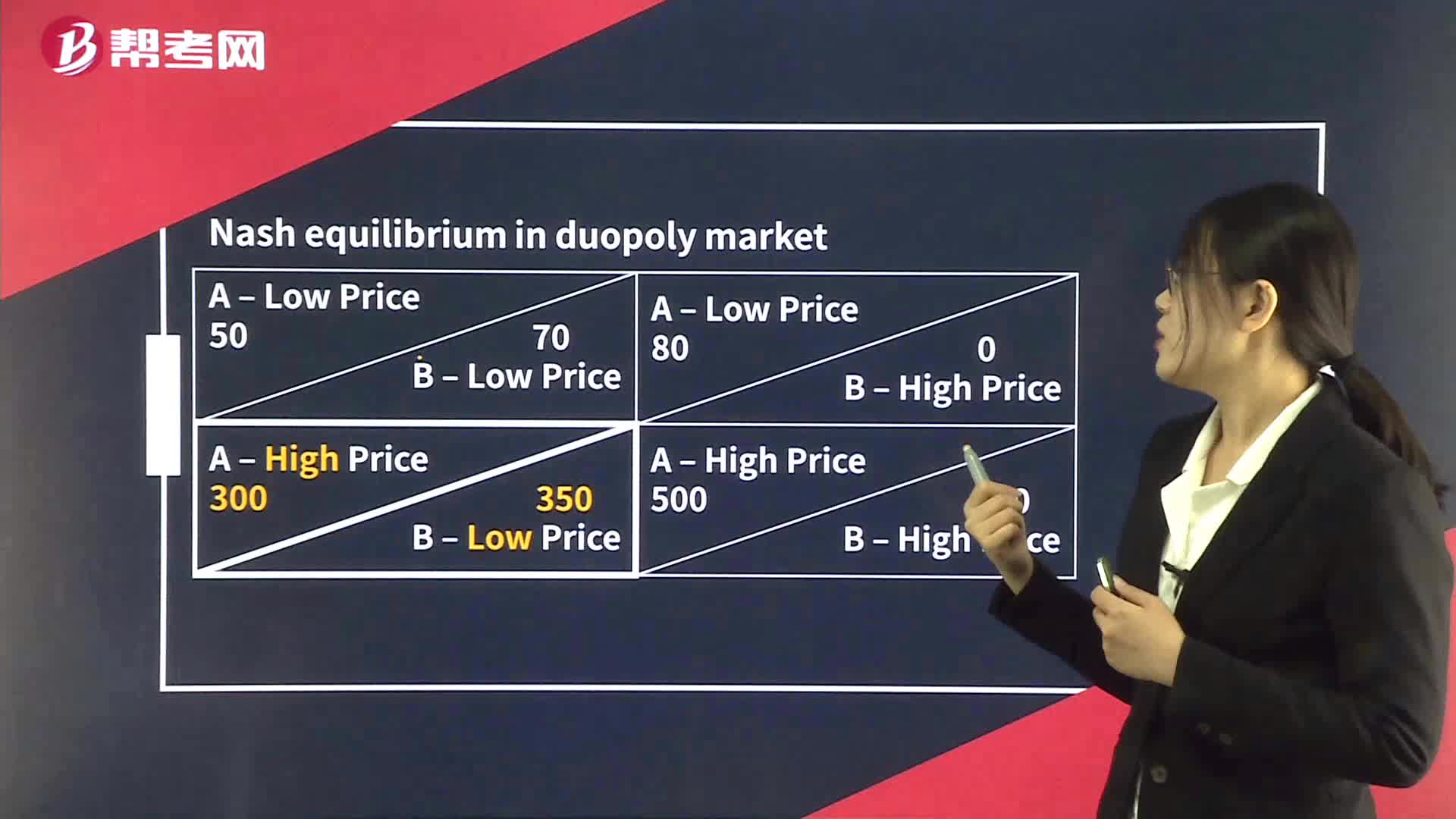
下载亿题库APP
联系电话:400-660-1360

下载亿题库APP
联系电话:400-660-1360

请谨慎保管和记忆你的密码,以免泄露和丢失

请谨慎保管和记忆你的密码,以免泄露和丢失
Long-Run Equilibrium in Perfectly Competitive Markets

The long-run marginal cost schedule is the perfectly competitive firm’s supply curve.
The firm’s demand schedule is the same as the firm’s marginal revenue and average revenue. The demand curve is perfectly elastic.
[Practice Problems] The demand schedule in a perfectly competitive market is given by P = 93 –
1.5Q (for Q ≤ 62) and the long-run cost structure of each company is:
Total cost: 256 + 2Q + 4Q2
Average cost: 256/Q + 2 + 4Q
Marginal cost: 2 + 8Q
New companies will enter the market at any price greater than: A. 8. B. 66. C. 81.
[Solutions] B
The long-run competitive equilibrium occurs where MC=AC = P for each company. Equating MC and AC implies 2 + 8Q=256/Q + 2 + 4Q. Solving for Q gives Q=8. Equating MC with price gives P=2 + 8Q=66. Any price above 66 yields an economic profit because P=MC > AC, so new companies will enter the market.
 144
144Short-Run Equilibrium in Monopolistic Competition:π = TR – TC
 177
177Short- and Long-Run Cost Curves:Short-“and Long-Run Cost Curves”cost SATC curve and a corresponding long-runaverage total cost LRAC curve.
 227
227Nash Equilibrium in Oligopoly Market:be willing to charge high prices.

微信扫码关注公众号
获取更多考试热门资料